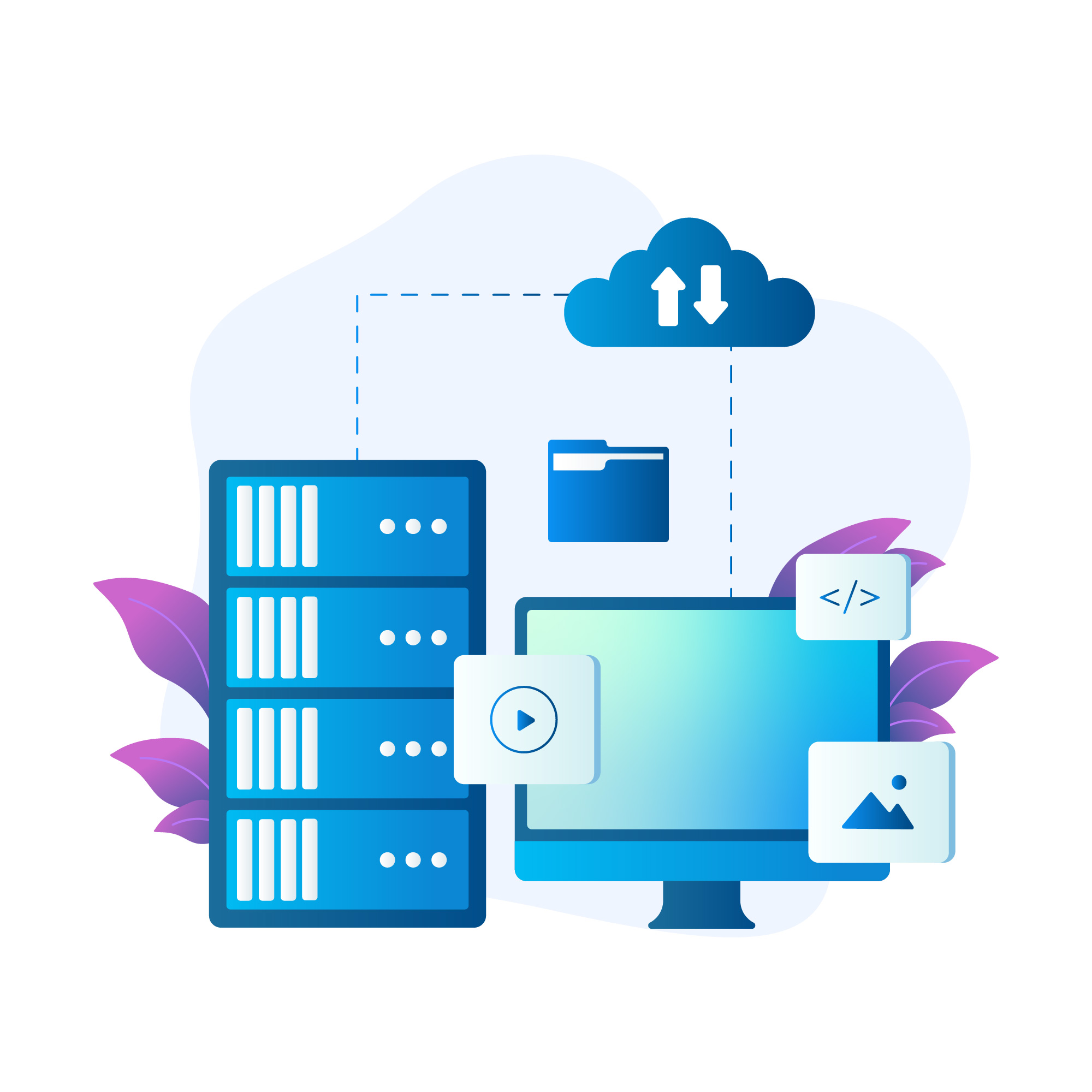The Future of IT Infrastructure Management
Modern businesses depend on reliable Benefits of IT infrastructure management that can adapt with business operations, from processing transactions to powering important applications – this intricate network of hardware, software and networks forms the backbone of our operations – yet managing it all presents IT professionals with an ongoing challenge.
Gone are the days of static on-premise data centers; today’s cloud computing, edge devices, and interconnected ecosystems require a more agile and dynamic approach. While these advancements bring fantastic opportunities for scaling and innovation, they also introduce layers of complexity – IT professionals face daily hurdles such as protecting expansive networks against sophisticated cyber-attacks while optimizing resource allocation across diverse environments and meeting fluctuating performance demands.
Answer lies in adopting a proactive IT infrastructure management approach: future-proofing IT. This forward-looking strategy goes beyond reactive problem-solving to build resilience, agility and adaptability – anticipating trends ahead of time, implementing innovative solutions quickly, and prioritizing continuous improvement can ensure IT professionals ensure their infrastructure continues to serve as an asset that contributes to business growth and success in an ever-evolving digital sphere.
Join us as we examine key trends shaping IT infrastructure management benefits, explore their challenges and potential advantages, and arm ourselves with knowledge to establish a future-proof digital journey for organizations of any kind.
Key Trends Reshaping IT Infrastructure Management’s Future:
1. Hybrid Cloud Adoption:
An Increase in Hybrid Environments: Organizations have adopted hybrid cloud models more and more frequently in their IT operations, which combine on-premise infrastructure with public cloud services for greater flexibility, scalability and cost advantages while creating management challenges. This offers flexibility while at the same time increasing cost complexities.
Impact on Resource Management: Resource management within hybrid environments requires managing resources across diverse platforms and require new tools and expertise for optimized allocation, cost control and performance monitoring.
Challenges: Consistency between cloud environments in terms of security, data governance and compliance is still an obstacle. Furthermore, optimizing data flow between on-prem and cloud resources requires precise planning.
Opportunities: Hybrid cloud adoption provides organizations with an innovative solution, offering on-premise control of sensitive data while using cloud agility for scalable apps, providing faster disaster recovery and easier workload migration.
2. Edge Computing’s Rising Importance:
Edge computing brings data processing closer to its sources for improved real-time insights, faster response times, and increased bandwidth efficiency – key features needed by applications like IoT, autonomous vehicles and AR/VR.
Edge Computing Affects Infrastructure Distribution: Edge computing requires distributed infrastructure management with numerous nodes situated throughout various geographic locations. To meet its security, network, and monitoring demands effectively. This necessitates strong security, network monitoring, and edge-specific solutions.
Need for Agile Management: Effective edge infrastructure management requires flexible solutions with agile capabilities to adapt to dynamic environments, limited resources, and frequent updates. Edge-specific tools and automation play a pivotal role in efficient administration.
3. Artificial Intelligence (AI) and Automation:
Optimize Resource Allocation: AI has become an invaluable tool in optimizing resource allocation by recognizing data patterns and anticipating resource needs, enabling dynamic allocation to prevent overprovisioning while saving costs by guaranteeing resources will always be available when they’re required. This ensures costs remain minimized while making resources readily accessible when they’re required.
Ethical Considerations: Integrating AI raises ethical concerns regarding bias, transparency and accountability of decision making processes. Implementation of robust ethical frameworks as well as human oversight are vitally important.
Challenges: Training AI models requires extensive data sets and expertise, while explaining and explaining AI decisions is crucial for maintaining trust and controlling them effectively.
4. Security Threats and Solutions:
Evolving Landscape: Cyber threats have evolved significantly over time to exploit hybrid and edge environments with ransomware attacks, supply chain compromise attacks, data breach risks posing significant threats.
Proactive Security Measures: Organizations require proactive security measures like threat intelligence, zero-trust architecture and continuous vulnerability evaluation to go beyond reactive solutions.
AI-Powered Threat Detection: AI can quickly analyze security logs to spot anomalies in real time, providing faster threat identification and response. However, protecting AI itself and warding off adversarial attacks must remain of primary concern.
5. Sustainability and Environmental Impact:
Businesses are going green with energy-efficient IT to shrink their environmental footprint.
Resource Sustainability: Optimizing resource use through artificial intelligence and automation, recycling materials responsibly and prolonging hardware lifespan can all contribute to sustainable IT practices.
Best Practices for Sustainable IT Infrastructure Management: Incorporating green cooling solutions, adopting circular economy principles, measuring environmental impacts accurately and reporting them are three essential practices of sustainable IT infrastructure management.
Conclusion
In summation, IT infrastructure management in its entirety represents an ever-evolving landscape marked by powerful trends such as hybrid cloud adoption, edge computing, AI/automation solutions, evolving security threats and sustainability concerns. Each trend presents both opportunities and threats; therefore it requires us to shift away from reactive management towards proactive planning based on manual automation with distributed servers being implemented at various points around a network infrastructure.
Quantum computing, blockchain technology and IoT (Internet of Things) innovations present businesses and IT professionals with new challenges and opportunities as we head into an ever-evolving digital sphere. By taking steps now to future proof their infrastructures with these emerging trends and making sure their IT meets industry requirements as fast as they emerge, businesses and IT pros can ensure agility, security and a lasting competitive edge while keeping pace with ever-evolving digital environments.
Be mindful that IT infrastructure management’s future is an ongoing journey of adaptation and innovation; be prepared to lead this charge towards creating an exciting digital future!



